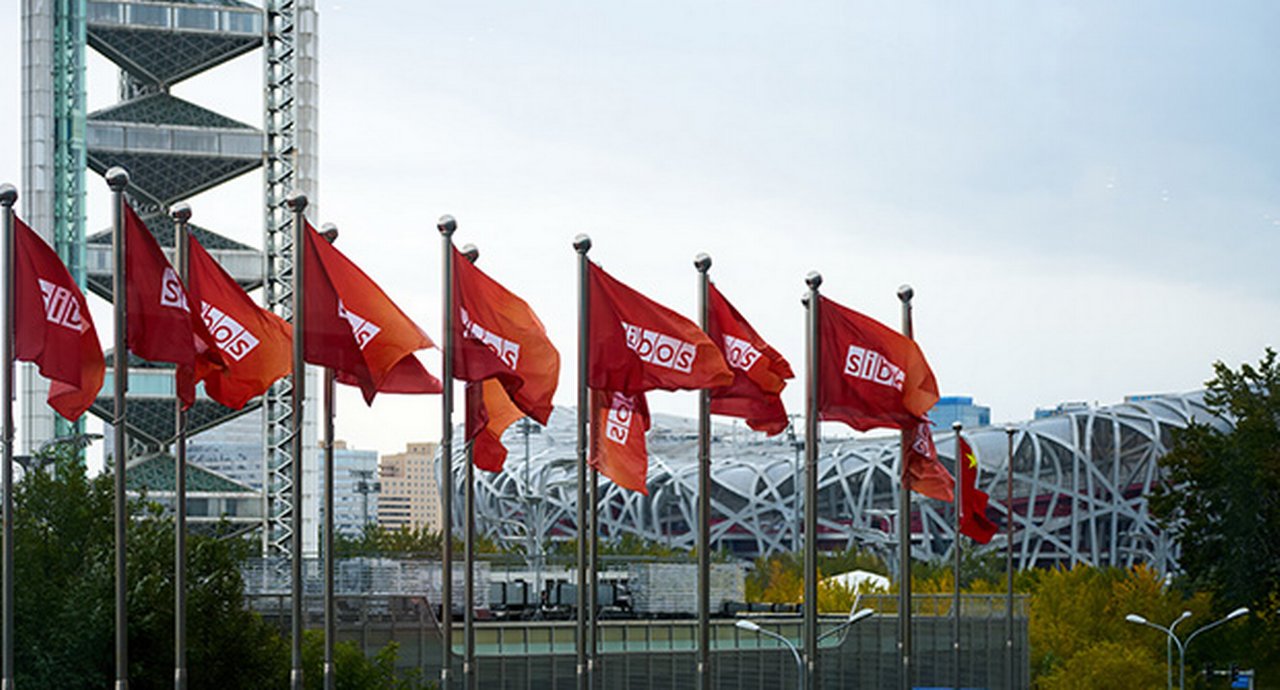2015
Evan Goldstein, Head of Renminbi Solutions at Deutsche Bank, speaks to Alastair O’Dell about navigating the internationalisation of the Chinese currency
MINUTES min read
The Chinese government is committed to transforming the Renminbi into a leading global currency. But while the goal is clear, the rate of progress depends on a delicate balancing act between simultaneous reforms of the capital account, the mechanisms for allocating capital and the severity of market volatility.
There has been a procession of measures to internationalise the currency that benefit both multinational corporations and asset managers.
“The moves China is committed to are all really positive. It’s just a question of which of them happens first,” says Evan Goldstein, Head of Renminbi Solutions at Deutsche Bank. “You have to be careful about which reform to go after and what the pace of reform will be, when you are most concerned about domestic employment, growth in GDP and the need to shift from an investment-based to a consumption-based economy.”
With high hopes for this dynamic currency, what factors will form the shape of things to come?
Multinationals
In China, multinationals have only recently been able to access sweep accounts, starting in the Shanghai Free Trade Zone in February 2014 and nationwide since November 2014. This has allowed corporates to free up trapped cash and consolidate overnight onshore Renminbi positions into a single-entity, two-way, cross-border sweep account offshore for integration into a firm’s liquidity pool.
“There is a real uptake for the sweeping mechanism,” says Goldstein. “The growth in the consumer market, in particular, means subsidiaries can now let money flow through to the parent corporation. It is a big change.”
Sweep accounts are part of a multipronged policy that also includes changes to funding and lending and establishing the ability to use offshore parent company guarantees onshore. “It means corporates can optimise and get the best overall funding they need, whether internally or through the market,” Goldstein explains.
Stock Connect
Launched in November 2014, Shanghai-Hong Kong Stock Connect opened up Chinese equity investment offshore (southbound) and foreign investment onshore (northbound). With Shenzhen and bond components in the pipeline, it can be viewed as a template for direct access.
Stock Connect has facilitated quota-free access to new investors, including offshore hedge funds, and it has highlighted beneficial ownership issues. European UCITS funds and US ‘40 Act funds were concerned with the Hong Kong Stock Exchange’s (HKSE) nominee structure, as the investor is not shown as the asset owner.
Growth in the consumer market means subsidiaries can now let money flow through to the parent. It’s a big change
"US ‘40 Act funds and UCITS funds would not invest under these conditions,” says Goldstein. “They want a beneficial ownership structure. They want to show who the end investor is, so if there is ever a claim or issue the end investor is truly represented.”
The HKSE, China Securities Regulatory Commission (CSRC) and the Shanghai Stock Exchange are working together and have since made an announcement that clarifies beneficial ownership.
“Everything is moving forward in a much more realistic way,” says Goldstein. “The degree of interaction between offshore and onshore is increasing, so China has to increase its engagement with industry groups and governments when tweaking its reforms.”
Historically, Chinese reforms have been internally focused, without significant consideration of foreign markets. But they are moving away from this narrowly focused approach.
“That is definitely not the case today. There has been a big conceptual leap forward,” Goldstein asserts. “Stock Connect, the Shanghai Free Trade Zone and the incremental loosening up of restrictions on sources and uses of funds show that China is committed to reform, which will either be a continuing drip-feed of liberalisation or China will surprise us with how fast it comes to the market.”
The Chinese government and regulators are doing whatever it takes to address the hurdles that many institutions have put forward
Despite its staggering pace of development, China remains an emerging market that still has some challenges. Many underlying markets are not yet exposed to market forces; municipal debt is substantial and opaque, state-owned enterprises take a dominant share of bank lending and onshore interest rates can be politically driven. But the government is cognisant of such issues and has plans for gradual liberalisation.
“The establishment of a municipal bond market is something that we see happening in the next 12 to 18 months,” says Goldstein. “As is the growth of the asset-backed securities and mortgage-backed securities market, which had stalled.”
MSCI and IMF inclusion
China is targeting inclusion in both the MSCI Emerging Market (EM) Index and the IMF special drawing rights (SDR) basket of currencies. Renminbi shares traded and purchased on the Shanghai and Shenzhen stock exchanges are known as A-shares. These are on the MSCI watch list, but inclusion requires “significant” openness to foreign ownership, which runs up against QFII/RQFII quotas. If A-shares were included in the MSCI EM Index they would comprise 40% of the index, which would be unachievable for many.
“If you are a large asset manager tracking the index, and the quota secured is significantly less than you need, you have an issue,” explains Goldstein. The MSCI and the CSRC have set up a joint working committee to tackle the problem.
IMF SDR designation brings greater benefits than just global reserve currency recognition. On a practical level, central banks could use Renminbi reserves for balance of payments investments. Also, when an IMF disbursement occurs, the recipient country could include Renminbi in its desired SDR composition. Inclusion would also mean that the Bank of International Settlements would have a better sense of foreign government investment in China.“You can see that the Chinese government and regulators are doing whatever it takes to address the hurdles that many institutions have put forward as stumbling blocks,” says Goldstein.
Market volatility
Perhaps the biggest impediment to the pace of liberalisation is volatility; reforms could be stalled or reversed if they create instability. During the month from June 8, 2015, A-shares experienced a major stumble, falling nearly a third and prompting a series of emergency measures, including cutting the interest rate and reserve requirement ratio, suspending IPOs, buying exchange traded funds, creating a market stabilisation fund and banning major shareholders/ insiders from selling stakes.
Deutsche Bank research suggests that foreign investors will hold up to 10% of China’s domestic bond market in the next five years
“The draconian measures – particularly for those with a holding larger than 5% having to hold until reaching a certain valuation – do not help the cause for reform,” Goldstein says.
The policy of managed convertibility – where certain items are closed or restricted in the capital account – is less about money coming in than going out. The government Is wary that a sudden opening of the capital account – making it fully and freely convertible – could cause trillions of dollars to flood out into foreign markets.
“If that happened, China’s financial system would be under tremendous pressure, says Goldstein. “It is an overarching concern.”
Next steps
A wide variety of further reforms are planned. The Shenzhen-Hong Kong Stock Connect is progressing, which will expand the number of liquid equities in the Stock Connect model and facilitate hedging instruments, such as for the CSI 300 Index. The proposed reform of IPO listing rules and the registration process will be a big step forward. It was expected imminently, but the recent volatility has inevitably meant delays.
The proportion that
A-shares would comprise
if they were included in
the MSCI EM Index
On July 14, restrictions on foreign monetary authorities’ investment in the interbank bond market were relaxed (see box). “There is no quota now, which is a big positive,” says Goldstein. “It is a foundation for further liberalisation and opening, which the private asset management world will benefit from.”
Another big liberalisation concerns the yield curve. The bulk of issuance goes out at three to five years (though some go out at up to seven years) but the growth of the municipal market could multiply the size of the market and push issuance out to 10 years or more.
A further significant development is the creation of the China International Payments System (CIPS), a cross-border interbank payments system equivalent to the Clearing House Interbank Payments System in the US. Phase-one rollout takes place in the fourth quarter of 2015 and will create a bridge between SWIFT instructions from qualified institutions directly through to CNAPS2 (China’s second-generation payment system). It also expands the window of operations to 20:30 Central Standard Time to take European operating hours into consideration.
“It should increase payment efficiency,” says Goldstein. “At the moment, there is a manual break, as there are fields in CNAPS2 that are not in SWIFT instructions. Also, SWIFT is in English and CNAPS2 in Chinese – CIPS bridges that gap.”
Local knowledge
The further away you get from an on-the-ground presence in China, the harder it is to understand reforms and benefit from the opportunities they bring.
Deutsche Bank is one of the few foreign financial institutions that is licensed to both be a broker in the interbank bond market and settle related transactions. “A lot of what we do concerns keeping our clients informed and educating them about the detail of the rules,” says Goldstein.
There is uncertainty, for example, about the different interest rates used in setting onshore and offshore foreign exchange rates. Corporate treasurers will be particularly concerned about interest rates and how they will be set. “When you hear that you can earn up to 1.5 times [interest] on your deposits, is that real or not? Should you expect to earn that, or is something else in play?” asks Goldstein. “When people hear about convergence, they want to know exactly what it means and what mechanisms are used to establish rates.” Local knowledge is also of paramount importance for corporates when they are considering the benefits of the myriad government-led initiatives, such as the free trade zones.
“A lot of business people are still trying to find out the benefits of not just the SFTZ but also the other zones that have been announced,” Goldstein says. “Do they need to be here or not? What, if anything, would they miss out on? How do they maximise the benefits for their business?”
Similarly, for Stock Connect, local knowledge is essential in understanding issues such as beneficial ownership and capital gains tax. “What will the Shenzhen Connect mean for investors? What does the shift from the nominee structure to segregated accounts mean? Also, what does delivery versus payment [DvP] mean?”
While participants are aware of the unusual T+0 market for securities, where trades are settled on the same day as the trade date, there are still crucial nuances. “Do I have to pre-fund my account? Or does my broker or custodian fund me? When the cash settles I want to have immediate access to it,” explains Goldstein. “Working through that DvP model is a real issue.”
The exchange has announced that it is going to address this in February 2016 and test it for two months. “By April, there will be a true DvP model in place,” says Goldstein. “However, until that happens, a lot of asset managers and global custodians are trying to understand what opportunities there are for them to start trading today.”
Relaxing restrictions
On July 14, 2015, the People’s Bank of China (PBC) confirmed that it is to remove interbank bond market restrictions for foreign central banks, supranational financial institutions and sovereign wealth funds.
Deutsche Bank highlighted three key benefits in a research paper. First, foreign monetary authorities will only need to register (rather than apply for a quota) with the PBC. Second, they will be able to trade all fixed-income products in the interbank without transaction size restriction. Third, they can freely choose any custodian in the interbank bond market or remain with the PBC.
The report states: “It affirms our view that China remains committed to financial liberalisation reforms, as well as to opening up the domestic capital market to the Renminbi is on track towards convertibility.”
Deutsche Bank suggests that the near-term impact will be limited as currently only 60% of the approximately RMB 600 billion of quota granted to foreign monetary authorities is being utilised.
However, Deutsche Bank estimates that in the medium to long term, foreign reserve inflows will boost demand for Renminbi bonds, especially sovereign and quasi- sovereign bonds. Over the next three years, the bank estimates that up to 5% of China’s domestic bond market will be held by foreign monetary authorities; in the longer term, this will rise to approximately 10%. It expects the market to grow in size, depth and liquidity.
“We expect China to further liberalise foreigners’ onshore bond market access,” the report concludes. “We forecast foreign investors to hold up to 10% of China’s domestic bond market in the next five years.”
Source: Linan Liu, Deutsche Bank Market Research, Offshore RMB Market Monitor, July 15, 2015



